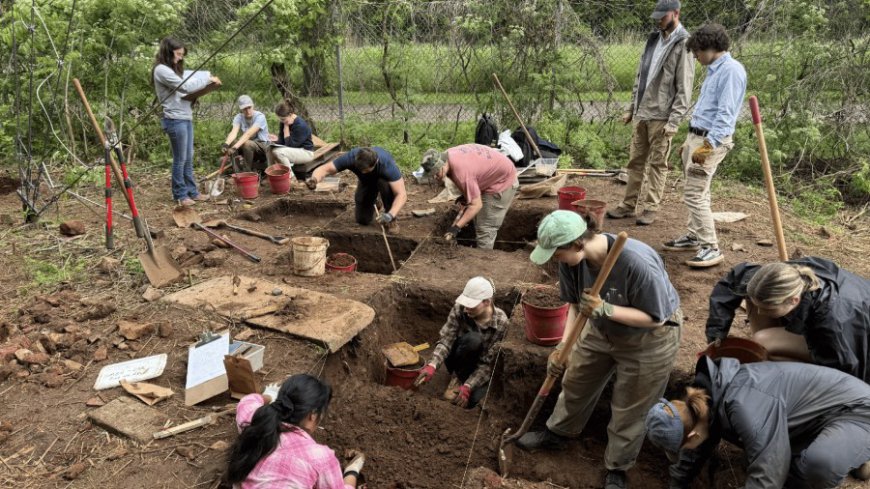Missouri State’s archaeology team uncovers one of Springfield's first homes
SPRINGFIELD, Mo. — A recent archaeological field school at Missouri State University (MSU) found what they call a "momentous archaeological discovery at one of its properties," according to an MSU news release. The release says in May, undergraduate students participated in a three-week field school led by the Center for Archaeological Research (CAR). During fieldwork [...]

SPRINGFIELD, Mo. — A recent archaeological field school at Missouri State University (MSU) found what they call a "momentous archaeological discovery at one of its properties," according to an MSU news release.
The release says in May, undergraduate students participated in a three-week field school led by the Center for Archaeological Research (CAR).
During fieldwork at the Darr Agricultural Center, they discovered the foundation remains of one of Springfield’s earliest homesteads — the William Townsend house, built in the 1830s.
With guidance from research archaeologist Dr. Daniel Pierce and CAR director Kevin Cupka Head, 20 students immersed themselves in hands-on training in archaeological excavation and surveying at the McKenzie-Townsend site.
The location straddles the Darr Center and Nathanael Greene Park.
According to Pierce in the release, previous excavations conducted by CAR in 2008 and 2012 hinted at the site’s historical significance, unearthing artifacts like Civil War-era buttons and 19th-century ceramics.
The precise location of the original house remained undiscovered until the final week of this year’s field school.
“Our goal for the field school was not only to teach students how to excavate but also be able to identify the site and where the house was,” he said in the release. “The students, as well as CAR staff are very excited about the discovery after so much searching.”
Learning by doing
One of the students involved was senior anthropology major Christina Cheek.
“I gained experience with excavation techniques and procedures, and learned how to conduct pedestrian surveys, shovel tests, GPS mapping and the lab processes of cleaning and cataloging artifacts,” Cheek said in the release.
Cupka Head said that through the students’ participation, they get a good idea about what North American archaeology and a possible career will look like.
“It's not so much about going into jungles and discovering lost cities. It mostly involves going around our backyard and making sure we’re doing what we can to protect historic sites and cultural heritage threatened by development,” he said.
A window into Springfield’s history
The McKenzie-Townsend site is named after early landowners Alexander McKenzie and William Townsend. Townsend came from Tennessee with his family and several enslaved individuals around 1832 and settled in the area. Archival records and artifacts suggest the Townsend family lived there until the mid-to-late 1850s.
According to Cupka Head, the presence of nails at the site indicated the house would have had plank flooring. The excavation uncovered a layer of floor sweepings — ash, ceramic fragments and other debris — that had likely fallen through the cracks and accumulated along the wall over time.
“It’s neat. You don’t really find sites this early with so much intact,” he said in the release. “It offers a glimpse of daily antebellum life in Springfield.”
Plans for more work
While fieldwork at the site has paused, CAR plans to return for future work.
“There’s a lot more to this site we’ve yet to identify,” Pierce said.
For example, there is reportedly a lost cemetery nearby. Researchers may use geophysical surveys to find and move it.
Cupka Head believes these types of projects are great examples of how CAR exemplifies Missouri State’s public affairs mission.
“It’s preserving the history of our community, the history of Missouri,” he said in the release. “We worked with Darr and city parks, as well as engaged with the public who came by with questions.”
CAR hopes to host public exhibits at the center and/or park to display some of the artifacts recovered from the site.
“The more public archaeology experiences we offer, the more we can inspire community interest and involvement,” Cupka Head said. “There’s so much out there to protect, preserve and identify, so bringing the public on board as partners and stewards of cultural resources benefits us all.”
What's Your Reaction?






















